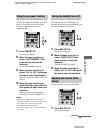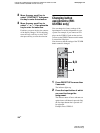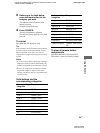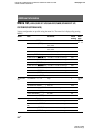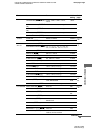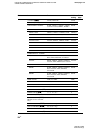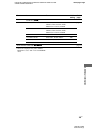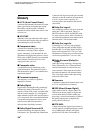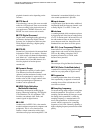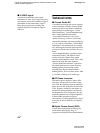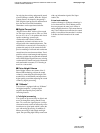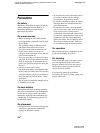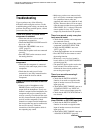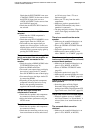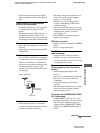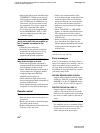
127
GB
E:\STR-DA7100ES\2320745143\2320745143STRDA7100ESUC\01GB-
STRDA7100ESUC\090ADD.fm
masterpage: Right
STR-DA7100ES
2-320-745-14 (3)
Additional Information
playback channels varies depending on the
software.
x DTS Neo:6
This technology converts 2ch stereo recorded
audio for 6.1ch playback. There are two modes
to select according to the playback source or
your preference, CINEMA for movies, and
MUSIC for stereo sources such as music.
x DTS Digital Surround
Digital audio encoding/decoding technology
for theaters developed by Digital Theater
Systems, Inc. It compresses audio less than
Dolby Digital, delivering a higher quality
sound reproduction.
x DTS-ES
Format for 6.1ch playback with surround back
information. There are two modes, “Discrete
6.1” which records all channels independently,
and “Matrix 6.1” which matrixes surround
back channel into LS and RS channels. It is
ideal for playback of motion picture
soundtracks.
x Dynamic Range
The reproductive capacity of audio signals.
The difference between the minimum
(quietest) and the maximum (loudest) sound
that can be reproduced is expressed by a
number value of dB. A larger number value
means a greater degree of quietness or
loudness can be reproduced.
x HDMI (High-Definition
Multimedia Interface)
Technology developed by modifying the
display connecting technology, DVI (Digital
Visual Interface), for AV equipment. This
interface can transmit video, audio, and
control signals in digital format.
x i.LINK
Another term for IEEE 1394, a data transfer
method used between personal computers and
peripherals. This is a new interface that
enables a simple connection with a single
cable between a player and an amplifier. 5.1ch
information is transmitted digitally so that
clear sound reproduction is possible.
x Input stream
A digital input signal that includes additional
information about the format or channel, such
as Dolby Digital 5.1 or DTS 5.1 data, etc.
x Interlace
A scanning method which completes a picture
by displaying half of the lines on a tube surface
of a TV or monitor each 1/60 second. First, all
the odd-numbered lines are drawn, leaving
spaces between each line, then all the even-
numbered lines are drawn to fill the spaces.
x L.F.E. (Low Frequency Effects)
Sound effects of low frequencies which are
output from a sub woofer in Dolby Digital or
DTS, etc. By adding a deep bass with a
frequency between 20 to 120 Hz, audio
becomes more powerful.
x LINC
The acronym of Logical Interface Connection.
x PCM (Pulse Code Modulation)
A method of converting analog audio to digital
audio for easy enjoyment of digital sound.
x Progressive
A scanning method that draws all scanning
lines sequentially, as opposed to interlaced
scanning where all the odd and then all the
even lines are drawn.
x Sampling frequency
To convert analog audio to digital, analog data
should be quantified. This process is called
sampling, and the number of times per second
the analog data is quantified is called the
sampling frequency. A standard music CD
stores data quantified at 44,100 times per
second, which is expressed as a sampling
frequency of 44.1 kHz. Generally speaking, a
higher sampling frequency means better sound
quality.
continued



